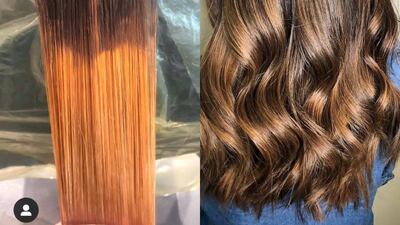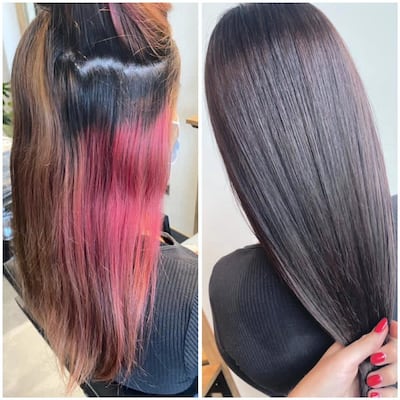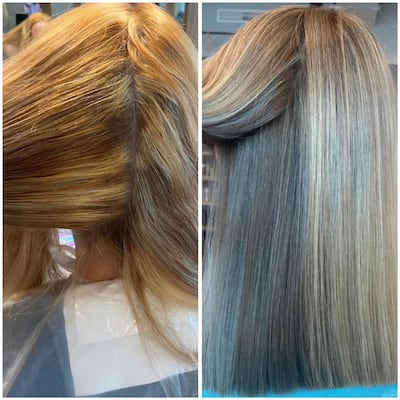A wave of disastrous “Covid hair” has been flooding UAE salons.
The closure of professional hair salons during the height of stay-home restrictions was a blow for purveyors of peroxide and those who prefer to disguise telltale grey hairs. As a result, some turned to social media for home-hair colouring advice, even continuing well after restrictions had lifted, albeit with disastrous results.
Joe Michael, of Colorista salon in Abu Dhabi, warns against following YouTube tutorials, saying: “In most instances, those tutorials don’t take expert advice from a professional stylist. They rarely share enough information on how to mix colours properly or what peroxide to use. That’s why people are confused.”
Monitoring hair dye is key
Probably the biggest consideration – adept administering – is one that’s most often overlooked by home colourists, adds Anna Sheen, owner of Pose salon in Dubai. Popular hair trends at the moment, such as balayage and ombre, involve carefully monitoring the toner and dye by hand to create a subtle depth of colour. The process can take hours and good technique makes all the difference.
“If you think about when you’ve ever tried to dye hair at home, it usually involves putting your head over the bath and adding dye to the back of your head," says Sheen. "This dyes the mid-lengths and ends of your hair first, when it should be the other way around. A stylist will dye the roots first as they are resistant and more porous than the rest of the hair, which has probably been chemically treated before.”
Alison Keogh, co-partner at Headkase Salon in Dubai, has sage and simple advice when it comes to DIY hair: “Don’t do it. Put the box colour down.”
It’s not just about picking a colour and putting it in your hair, she says. “Natural hair will take dye differently to chemically treated hair. When choosing a colour, you need to allow for a natural lift of warmth, especially with lighter tones. This situation often results in patchy shades and the dreaded orange or pink bands of hair.”
To correct a disaster of this magnitude, as well as treat and repair damaged strands, one hair appointment is seldom enough, Keogh adds. If several visits are required, you could be looking at thousands of dirhams. That five-minute supermarket box colour ends up costing a lot more in the long run.
Covid hair is real
Michael says the number of clients in need of a hair fix coming through Colorista’s doors increased dramatically when salons reopened, but remains high even now as many people continue to social distance.
Working remotely is a big factor, too, Michael says. Not only can people cover up their hair if need be last minute, some have found they have less free time than before owing to remote working and online learning.
“Women are trying to cover their greys at home, but the results are completely different on grey hair, especially with hair that’s already been chemically treated,” Michael says. “If you want to take your hair from dark to light, there’s a transition period you need to go through and that’s where the issues arise.”
Nine out of 10 colours applied at home will turn out darker than expected, states Keogh, because box colours are saturated with pigment. Hairstylists, of course, know this and can compensate. She places the blame on misleading social media tutorials, too: “These videos are edited to make it look easy. It’s not.”
While Sheen and Keogh ward off home dyes altogether, Michael is more forgiving. “If you have to use a home dye, ask for professional help,” he advises. “Cosmetic companies such as L’Oreal offer free advice via their online chat forums. Ask what colour is best for your hair and how it should be mixed.”
Michael draws the line at cutting your own hair, however. “We had plenty of mothers cutting their own children’s hair in quarantine. Let’s just say those bangs were far from straight …”
Mane points for safe home colouring
- Natural and grey hair takes colour differently than chemically treated hair
- Taking hair from a dark to a light colour should involve a slow transition through warmer stages of colour
- When choosing a colour (especially a lighter tone), allow for a natural lift of warmth
- Most modern hair colours are technique-based, in that they require a confident hand and taught skills
- If you decide to be brave and go for it, seek professional advice and use a semi-permanent colour



